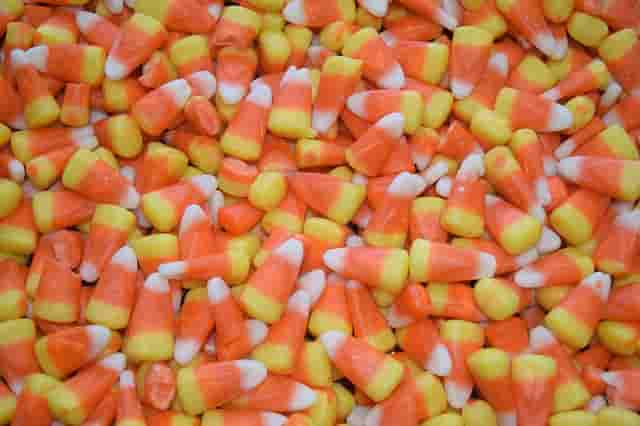
Trick or Treat: Halloween is Really Scary for Kids with Diabetes
By Tony Hicks

Jenny Urban discovered her 6-year-old son, Chase, had Type 1 Diabetes – five days before Halloween.
“It was a rapid adjustment,” said the Half Moon Bay resident, with a laugh. “It became a totally different holiday for him.”
And for his mom, who suddenly found herself monitoring the now 14-year-old’s blood sugar,
monitoring how much exercise he was getting, and how much candy he could have at night’s end, when kids traditionally sort and compare their loot.
Celebrating what’s supposed to be the creepiest day on the calendar gets even scarier for some parents each year, according to the National Institutes of Health. A study published in 2017 in the New England Journal of Medicine says cases of Juvenile Type 1 diabetes is growing by 1.8 percent annually, which is eclipsed in the same age group (below 20 years old) by Type 2 diabetes, which the study says is growing at a 4.8 percent clip annually.
According to the NIH, Type 1 Diabetes – which prevents the body from making insulin – is the most common form of the disease in young people. With Type 2 diabetes, the body does not make or use insulin well. Insulin is a hormone produced by the pancreas that regulates the amount of glucose in a person’s blood.
“Everyone, kids included, should limit sweets,” says Jeff Hitchcock, the president of advocacy group Children with Diabetes. “And sugar-free candy is not a good idea, since most are sweetened by sugar alcohols, which can cause stomach distress. If you’re going to allow your children to eat candy, then let them enjoy the real thing.”
Urban says she doesn’t see many parents offering sugar-free candy, which Chase doesn’t like anyway. Instead, she monitors (or monitored, as Chase doesn’t trick-or- treat much anymore) Chase’s blood sugar while he burns calories traveling from house to house. Kids may actually need some sugar for all the energy they burn.
“We stayed close to him, because walking lowers his blood sugar,” she says, adding that when that does occur, Smarties are her go-to choice for a sugar boost. When not logging neighborhood miles, Urban would parcel out the candy over time (making sure the whole family satisfied their collective sweet tooth as well).
Food like Smarties are good for increasing levels of dextrose, which brings depleted sugar levels up rapidly (the Juvenile Diabetes Research Foundation agrees with her Smarties assessment in its Halloween guide). The JDRF also says chocolate bars, with their high sugar fat content, isn’t necessarily good for bringing up sugar levels quickly.
But if the sugar level is good, “If he’s going to have something sugary, we give him dark chocolate, because it’s more healthy,” Urban says. “It has lots of fat, so he digests it slower.”
Shelly Jensen, the Marketing and Communications Director of the Bay Area chapter of the Juvenile Diabetes Research Foundation, says the group publishes a Halloween guide for young diabetics and their parents every year (go to www.JDRF.org).
This year’s version has yet to be published, but the 2017 guide helps lay out a plan for parents, including researching foods to avoid, the symptoms of hypoglycemia (low blood sugar) and hyperglycemia (high blood sugar), counting carbohydrates (which break down digestible food into sugar), and finding alternative treats with less sugar.
The JDRF recommends parents decide beforehand how much sugar they’re comfortable with allowing their kids to eat, monitoring blood sugar, knowing the appropriate insulin levels kids should be at, which foods to avoid.
The guide also lists the carbohydrate count for various items that may show up in the goodie bags of children including blow pops (13 grams), candy corn (1.9 grans per piece), Hershey’s Kiss (2.8 grams per piece), Skittles (1 gram per piece), and Reese’s Peanut Butter Cups, which comes in with a whopping 12 grams per 21- ounce cup.
The foundation also recommends parents remember the effect all that running around between houses isn’t necessarily regular routine, and that they consider the activity level of their kids. Plus, lower temperatures can contribute to hypoglycemia.
“Regardless of costume, make sure your child stays warm,” the foundation recommends.
Plus, as most parents understand, kids may believe they can be sly with their candy consumption.
“Take inventory,” the foundation says. “Sneakily consumed candy can be the explanation for some elevated Halloween blood sugars.”
The good news for parents is that there are choices when it comes to taking … and giving.
“Get the real thing, or give out alternatives, like small toys, which is what our family does,” says Hitchcock. Each year we buy a bunch of Halloween-themed, inexpensive toys. Kids – even teens – often appreciate getting something fun and different.”
The JDRF says it’s a good opportunity for parents to “get creative.” They can score a win for their own taste buds by buying back treats, either with cash or more healthy alternatives. The candy can also be used as currency to get other items. Dentists often have candy buy-back programs.
The sugar loot can also serve as a method by which to teach kids how to be charitable.
“Food pantries and hunger groups often accept candy donations for those in need,” says the treat guide. “And military organizations will send candy to trips overseas.”
That would likely be a great way to spend a sugar rush.


You May Also Like

You Want to be What?: Halloween 2018 for Kids and Tweens
September 27, 2018
It’s the Spookiest Time of the Year: Always Amused October 2018
September 27, 2018

